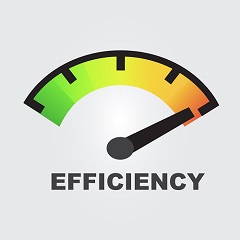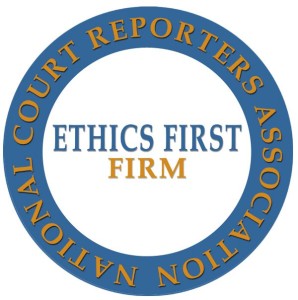A good sense of organization is valuable in almost every workplace. A heightened sense of organization and efficiency, though, can give you a reputation around the office as somewhat obsessive. For court reporters, however, painstaking organization is a skill that is often highly admired.
On the surface, court reporting may seem like an easy job—after all, it’s only typing what other people say, right?
Wrong. Court reporting is an essential part of the legal process and, when done correctly, can make the difference between a good verdict and a bad one. A court reporter is put under a tremendous amount of pressure to transcribe detailed and accurate reports flawlessly. In order to accomplish this task, she must go above and beyond the conventional standards of organization, especially while editing transcripts.
 Strengthening Editing Skills and Organization
Strengthening Editing Skills and Organization
For a court transcript to be useful, it must not only make sense but it must also be clear and concise, highly detailed (reflecting everything that was said during the deposition), and well-written.
Although the pressure and chaos of a trial may cause slight errors during transcribing, this doesn’t mean those errors should be permanent. In fact, the editing process should resolve any errors made during the initial transcribing and should incorporate any additional tweaks that may be needed. Unfortunately, the pressure for precision can easily affect a court reporter’s editing efficiency.
Below are a few helpful tips our best reporters follow to organize their editing tasks, boost their efficiency, and also produce high-quality transcripts without wasting time.
- Practice. Although editing may seem time-consuming, by taking the time to proofread your transcripts closely you’re not only ensuring a better record but you’re also allowing yourself to become a better court reporter by learning from your mistakes. For example, by editing your pieces, you can learn what words or phrases you find confusing during a trial, in order to prevent confusion later on. Furthermore, the more time you spend editing, the easier it will become—and the easier it becomes, the faster you’ll be able to finish future editing projects.
- Proofread. Before presenting a transcript, take the time to read, re-read, and proof the entire report—paying special attention to proper spellings (locations, names, foreign words). It may even be beneficial to read the transcript in different mediums (computer screen, on paper, in a different font, etc.) in order to see potential variations or errors. Sometimes looking at text from a different angle can give you a different perspective of what works and what doesn’t.
- Focus. Distractions are most common cause of errors. When half of your focus is pulled away from your transcript, it’s difficult to notice potential errors. When editing, make sure you’re in a location that has limited distractions (noise, people, visual stimuli, etc.), so that you can put your full attention on your transcript.
- Double-check. In some situations, you may find that instead of proofreading a transcript completely through in one sitting, you’re forced to edit in sections. When this occurs, before submitting the finished product, make sure you do one final read-through from start to finish to ensure it reads smoothly without any errors.
Attorneys depend on their court reporters to have the skills and forethought to properly edit their transcripts without being told to do so. Make sure you build your skills in order to ensure that you can give what the court depends on—A professional, efficient, and reliable court reporter who produces accurate, well-written, and dependable transcripts.

